Ford Capri (Mk1) | PH Auction Block
Always fancied a Mustang over a Capri? This'll put you right
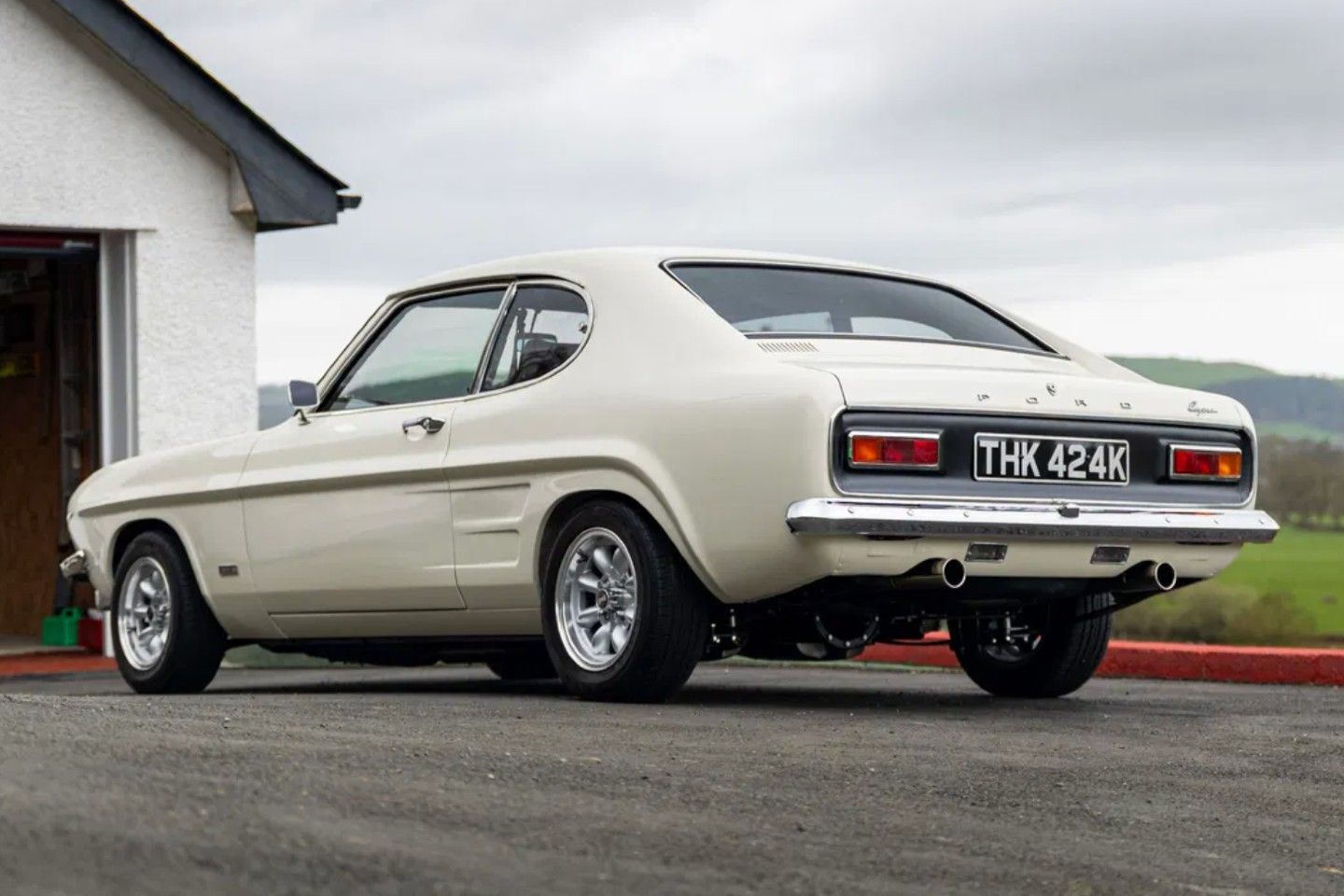
We’ve always had the short end of the stick when it comes to the Ford Mustang here in Britain. It took over 50 years for it to officially reach our side of the pond with the steering wheel on the correct side, and while we've been treated to the odd special edition (the Bullitt and Mach-1), the real hell-raisers (i.e. the Shelbys) were always reserved for the US market. And while it’s very thoughtful of Ford to give us the new Dark Horse, it’s frustratingly a watered-down version of the car sold in the States.
Of course, that’s not Ford’s fault. Emission regs, not the US car giant, are to blame for the Euro-spec Dark Horse and the complete absence of Shelby models (save for the odd Super Snake conversion) in Europe. Had Ford been in a position to launch the Mustang on the Continent sooner, it would have. The big problem, before all the legislative red tape got in the way, was that sending the Mustang across the Atlantic would have made it considerably more expensive, and a big part of its ginormous success was that the average Joe could get their hands on one. So Ford, not one to turn down an opportunity to make a fast buck or two, decided to develop an attainable, Mustang-style sports car for the European market - enter the Capri.
It certainly looked the part with Philip T. Clark, designer of the Mustang, handling the styling and although it launched with a range of puny four-pots at launch, a more appropriate 3.0-litre V6, as found in the car we have here, came not long after. It’d never officially get a V8 here in the UK (though it would in South Africa with the Perana), but that did nothing to hurt its appeal. The Capri would go onto sell 1.9 million examples across its 18-year and three-generation lifetime, and is still a poster child for the people’s performance car all the years on.
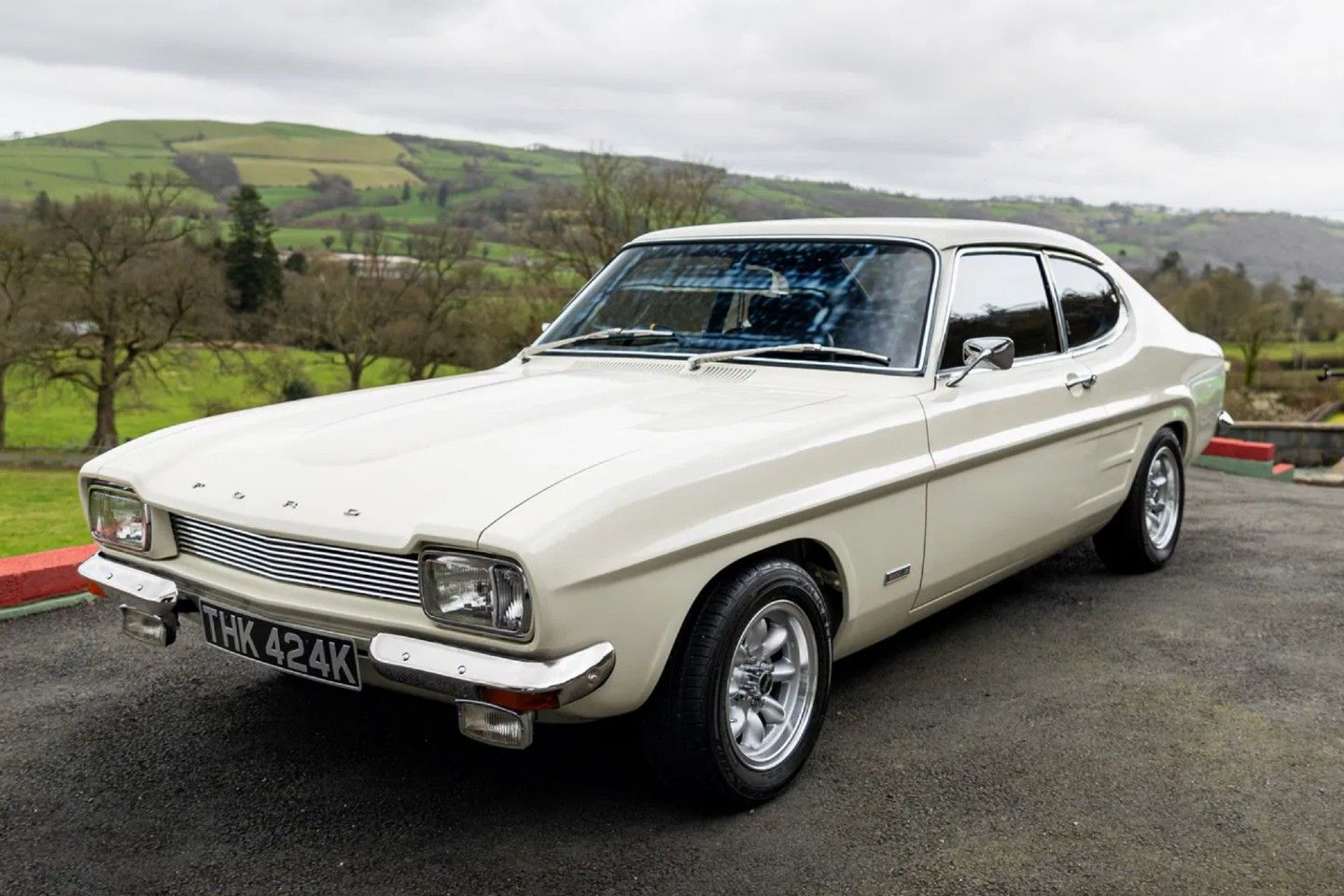
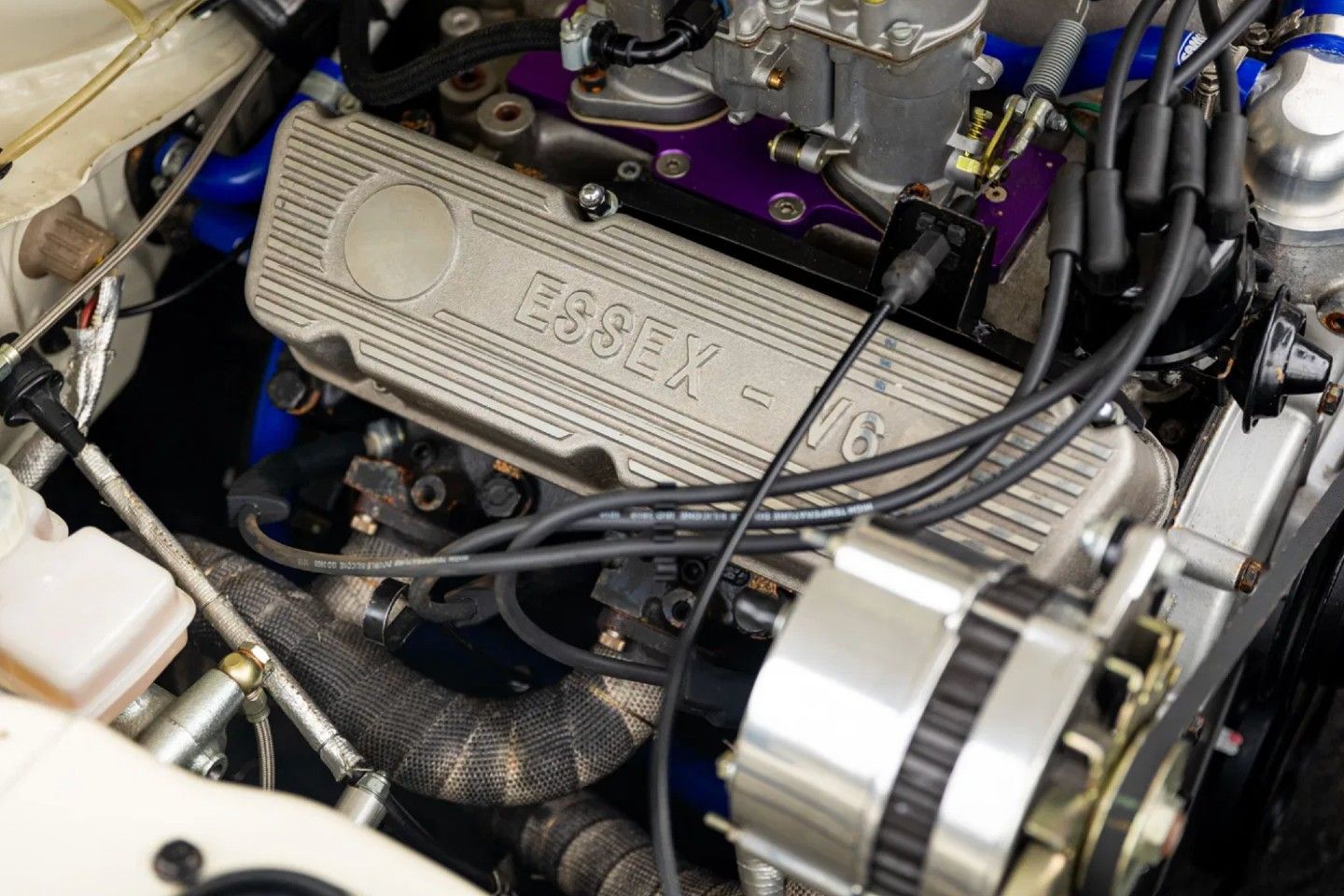
Later generations would add extra muscle and grunt, but the Mk1 remains the prettiest. And they don’t come much prettier than this 1972 3000E, which is the result of a comprehensive restoration costing the previous owner somewhere in the region of £10,000. That includes a bare metal respray to Ermine White (the V5 notes its original colour as red), as well as the fitment of new wings, quarter panels and front valance. Just as much effort has been put into restoring the interior, too, with new upholstery, carpets and headlining elevating the cabin back to its '70s-era best. Aside from a few (very welcome) aftermarket upgrades, including a modern audio system and deep dish Sparco wheel, it’s as original as it gets.
Then there’s the engine. Pop the bonnet and you’ll find a 3.0-litre Essex V6, just as you would have done back in 1972, only this one’s been hand-built by historic racing specialist Ric Wood. Original 3000Es would have been churning out around 130hp, but this one is said to be pumping out 180hp. Should feel properly quick, then, and sound good too with a hand-made Tony Law exhaust system. On the chassis side, the suspension has been refurbished with new rear axle and springs, while several improvements have been made including uprated Avo dampers and a full disc brake conversion. A new fuel tank, lines, wiring looms and battery bring additional peace of mind.
It really is a wonderful thing, and it’s hard to imagine there are too many out there that have been restored to what seems like a sky-high standard. And because it’s a Capri, you’ll never be stuck for parts or good old-fashioned know-how, not that any of that will be an issue given that it’s only covered 700 miles since its restoration. With a guide price of £40,000 - £42,000, it’s certainly on the high end for a Capri, but you’re getting what has to be one of the best examples around. Expect a flurry of bids when the auction opens on Sunday.
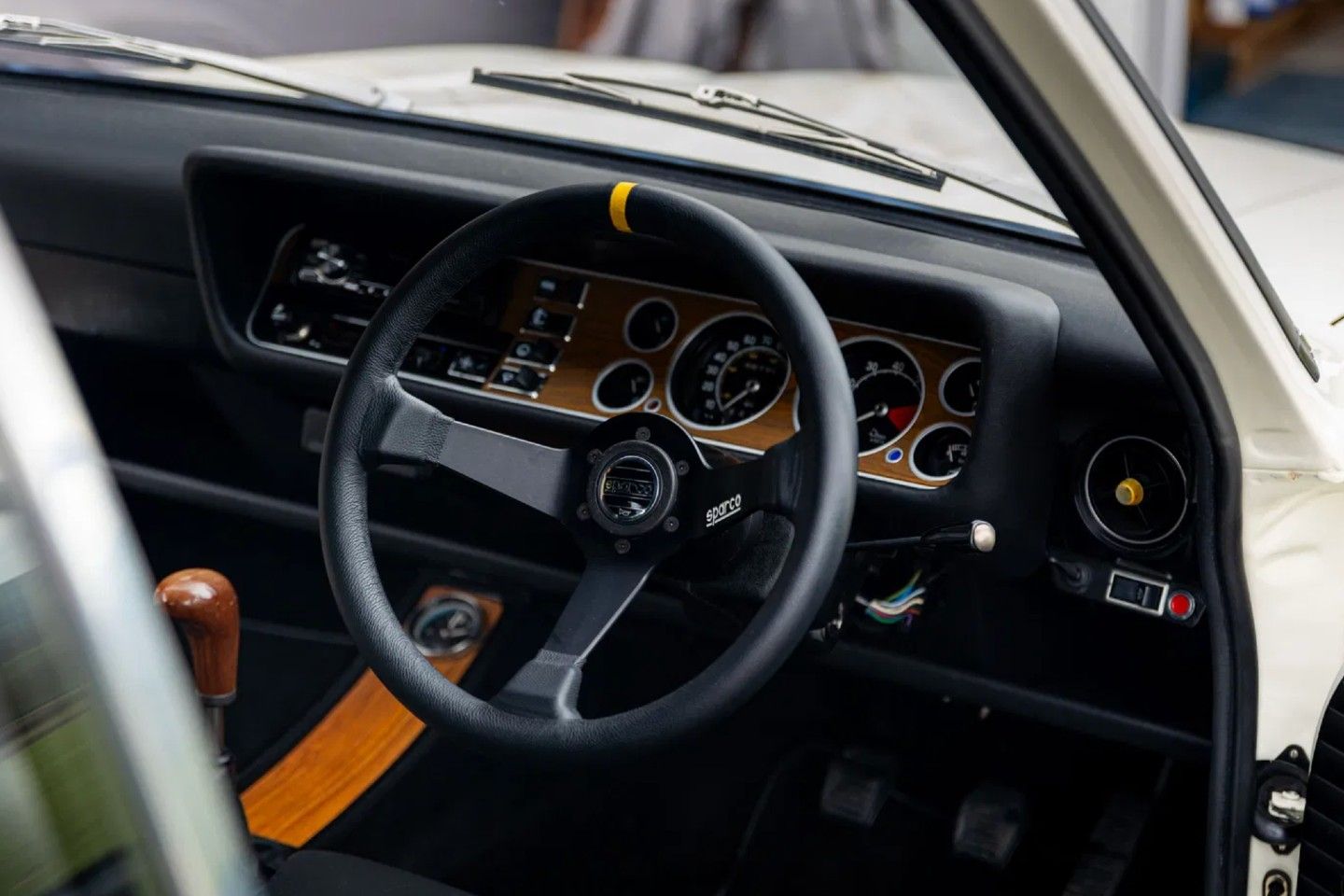
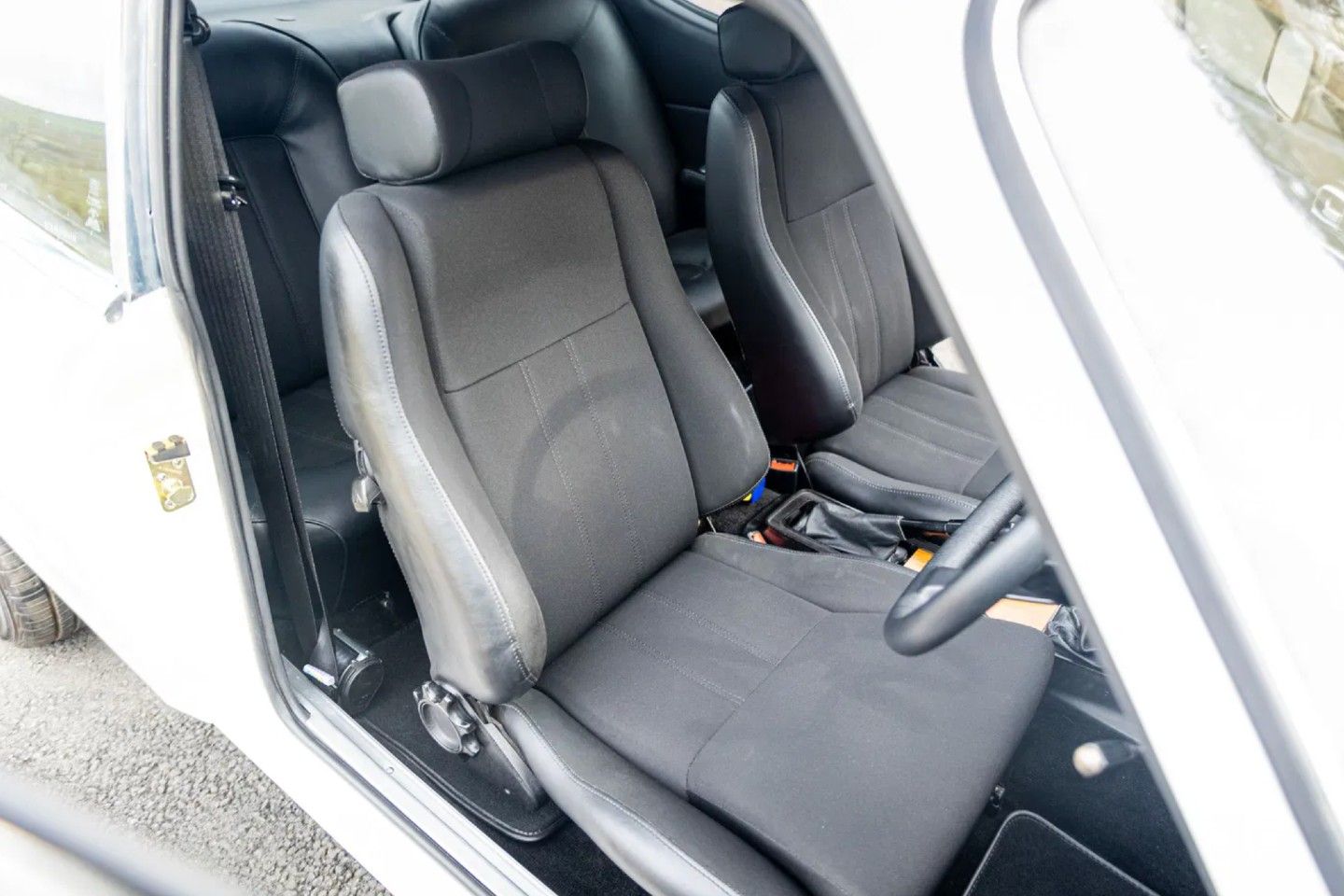
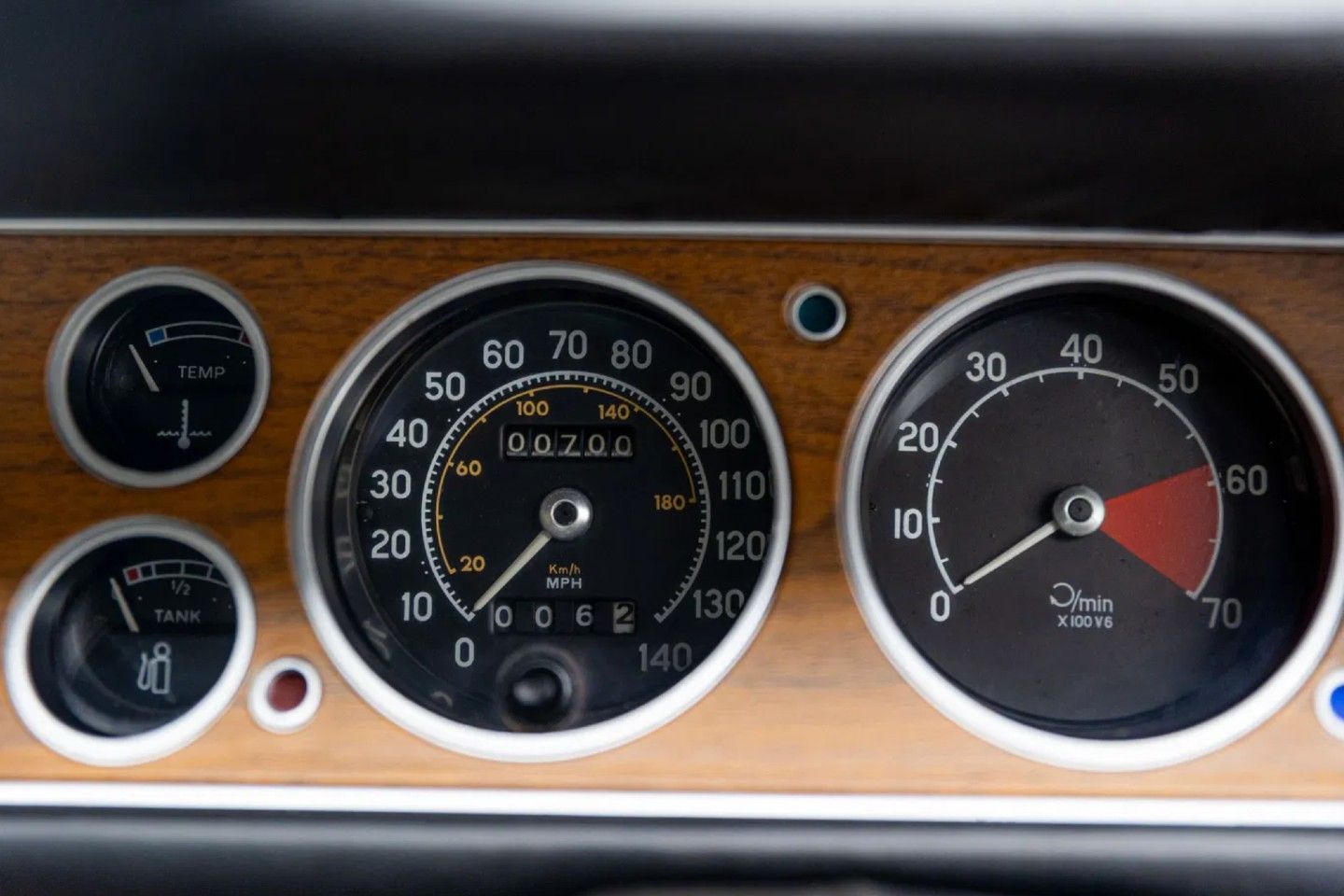
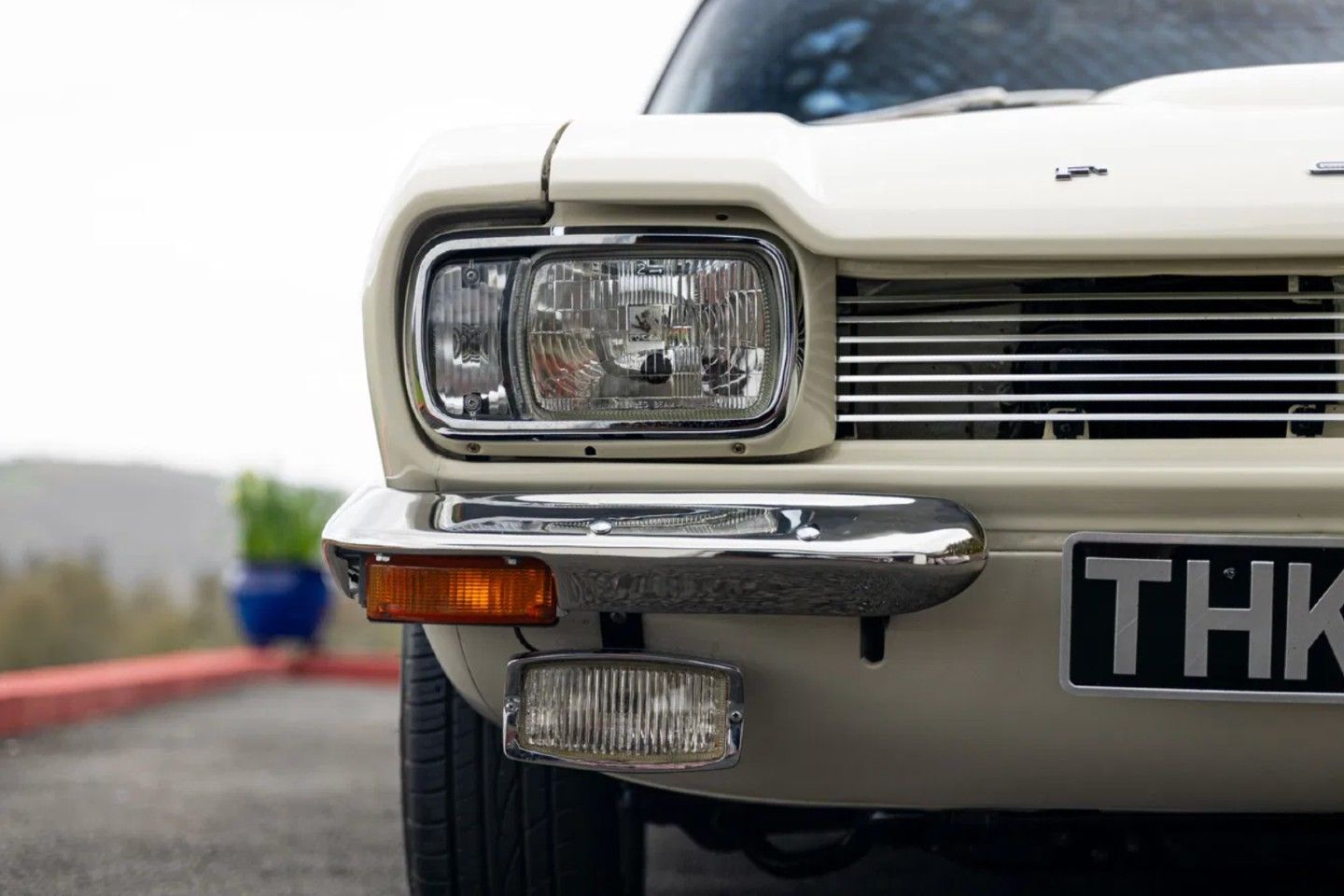
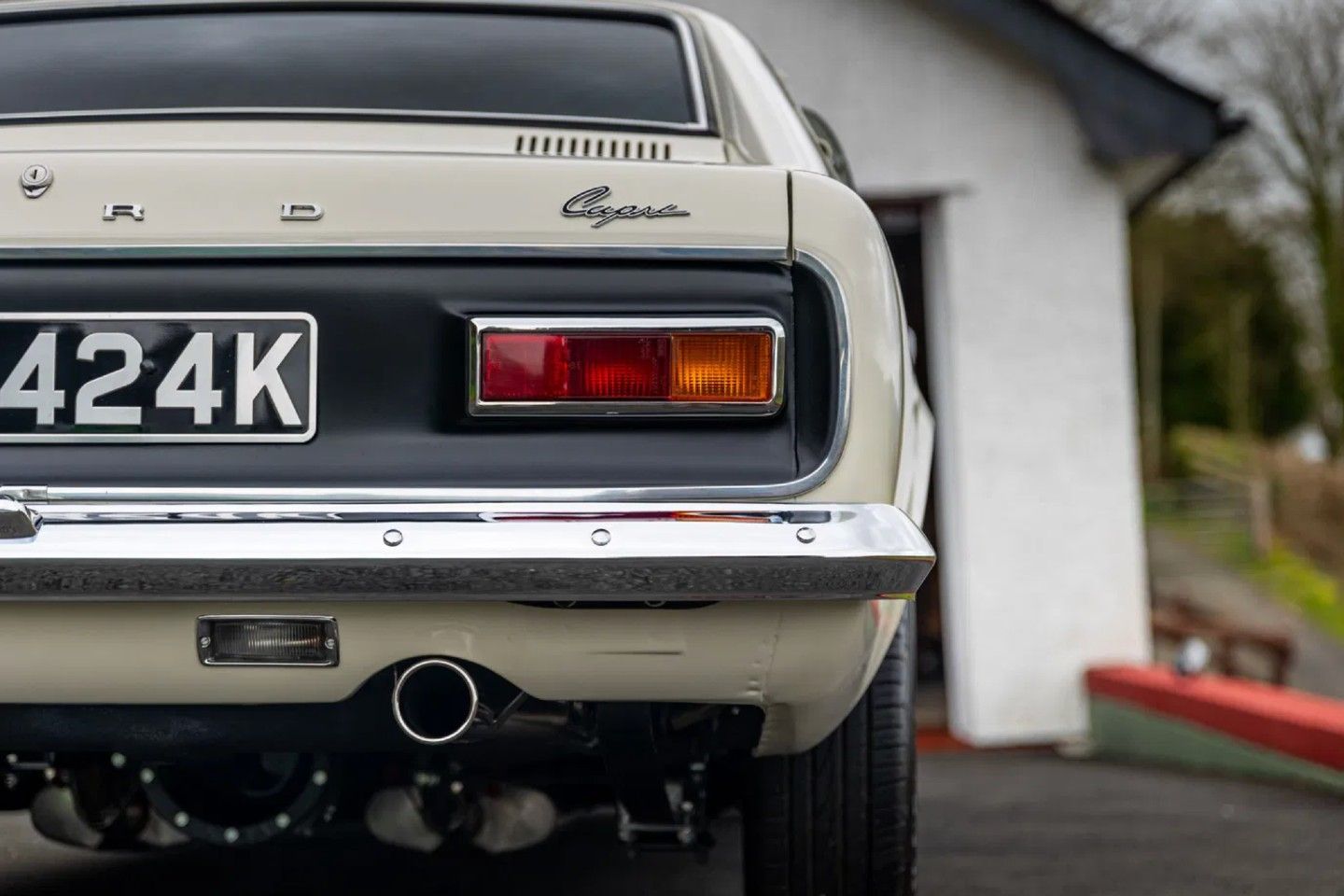
Gassing Station | General Gassing | Top of Page | What's New | My Stuff



